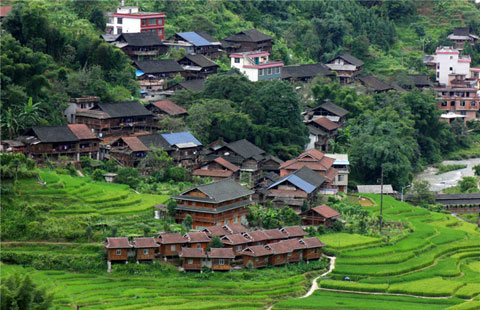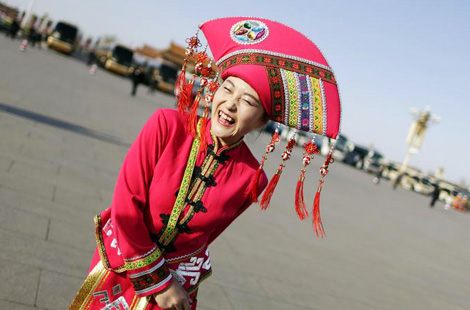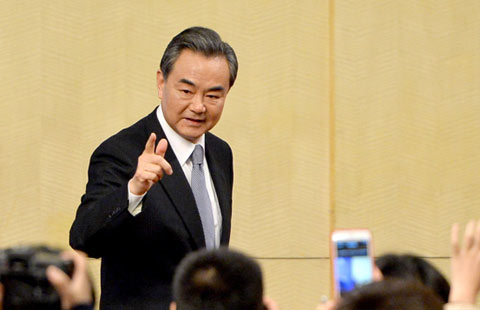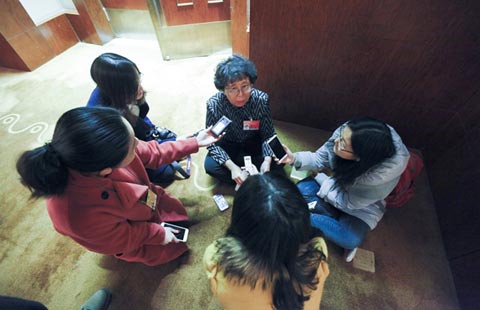China is key banker for Latin America
Updated: 2015-03-09 23:38
By PAUL WELITZKIN in New York and REN QI in Beijing(China Daily Latin America)
|
|||||||||
China has opened its arms and wallet to Latin America, providing more finance to the region in 2014 than that of the World Bank and the Inter-American Development Bank combined.
2014 was the second-highest year on record for Chinese finance in Latin America, with loans topping $22 billion, according to the Inter-American Dialogue and Boston University's Global Economic Governance Initiative,.
"I think it is important to point out that just as China is becoming a major lender to Latin America, it is also an increasingly important client," said Jennifer Cyr, an assistant professor of political science and Latin American studies at the University of Arizona in Tucson. "China has a voracious appetite for natural resources and commodities of all kinds, and many Latin American countries can help China meet that demand."
Brazil received the most in loans from China, $8.6 billion in 2014 followed by Argentina at $7 billion and Venezuela with $5.7 billion, according to the China-Latin American Finance Database from Inter-American and the Boston University initiative.
Margaret Myers, program director for China and Latin America at Inter-American, said resources were a major reason why those three Latin American nations received the most loans.
"They are rich in resources, especially the resources that are important to China's economy," Myers said. "It's also easy for the Chinese to access these countries – they are run from the top down and they don’t have a complex investment environment."
Cyr said in an e-mail that there are other reasons why China is so eager to help Latin America. "By strengthening economic and financial relations with several Latin American countries, China lays the groundwork for other kinds of ties with the region including social, cultural and political ties. And Latin American countries profit from this as well by diversifying the "major players" with whom it must interact. China might serve as a nice counterpoint to the region’s ever-looming neighbor to the north.
"This is especially true for leaders like (Ecuadorean President Rafael) Correa, (Bolivian President Evo) Morales and (Venezuelan President Nicolas) Maduro, who are happy to strengthen ties with countries with whom they feel more ideologically aligned."
Myers said China's expanding outreach to Latin America doesn't necessarily pose a challenge to the region's traditional ally, the United States. "China's growing presence in Latin America means the region has an alternative to traditional trading partners like the US," she said.
Cyr said that the US has had limited success over the last few decades in maintaining a positive relationship with Latin American countries.
"Its track record when it comes to financial ties is particularly troubling, at least from the perspective of Latin America," Cyr said. "One need only point to controversial US policies from the past as evidence: the country’s pocket-book diplomacy, its Good Neighbor policy under FDR, or dollar diplomacy under Taft.
"These policies did little to help Latin American countries and primarily advanced US interests n the region," noted Cyr. "The United States probably should be concerned about the growing economic, political and social ties with China, since it does represent competition for the US' own ties in the region."
Chen Xi, an analyst on macro examination, said that China would maintain a high level of investment in Latin American countries. On one hand, after three decades of development, the priority of China's opening-up policy has gone from "bringing in" to "going out".
With the establishment and implementation of the Silk Road Economic Belt, the scale of "going out" policy has been enlarged. On the other hand, China needs to import energy, mineral products and food from Latin America.
Xie Wenze, a researcher of the Latin America Institute of the Chinese Academy of Social Sciences, said that China has become the most important country for Latin American countries from a financial aspect. China provides bilateral concessional loans to Latin America without any political preconditions.
Despite all this, loans from China did come with economic preconditions, which demanded these countries have the ability to pay back or have measures such as government guarantees or trade finance to prevent risks.
President Xi Jinping delivered a speech at the opening ceremony of the first ministerial meeting of the Forum of China and Community of Latin American and Caribbean States (CELAC) on January, saying that China would invest $250 billion in Latin American regions in the coming decade, while Sino-Latin American bilateral trade will see a jump to $500 billion.
After President Xi met his Ecuadorean counterpart Correa and Venezuelan counterpart Maduro during the forum, China reportedly agreed to issue $7.5 billion in loans and $2 billion in loan commitments, respectively.
In February, China promised Argentina a $6.8 billion loan to help with the construction of two hydroelectric power stations and railways.
But on March 2, the government of Argentina announced that it would abolish all railway franchise contracts with private enterprise so as to nationalize the railways in the country.
Xie pointed out that the reason Argentina decided to nationalize the railway system was because during a 20-year period of privatization, private operators did not hold the investing responsibility regulated by the franchise contracts, which left the railway network with aging problems and led to frequent accidents. Therefore, the government decided to revitalize its railway system.
Chen said although the two countries maintain a good bilateral relation, the Chinese companies might still suffer some unavoidable impact.
Contact the writers at paulwelitzkin@chinadailyusa.com and renqi@chinadaily.com.cn

 Bravo!
Bravo!
 Rally in New York supports indicted Chinese-American police officer
Rally in New York supports indicted Chinese-American police officer
 Brazilian soccer stars prosper in China
Brazilian soccer stars prosper in China
 Traditional villages: Home of Chinese culture
Traditional villages: Home of Chinese culture
 Daily snapshots of 'two sessions' - March 8
Daily snapshots of 'two sessions' - March 8
 Chinese FM gives press conference for NPC session
Chinese FM gives press conference for NPC session
 One Minute: 'Bizarre' TV scenes and subsidies for hiring women
One Minute: 'Bizarre' TV scenes and subsidies for hiring women
 MH370 families remember one year on
MH370 families remember one year on
Most Viewed
Editor's Picks

|

|

|

|

|

|
Today's Top News
China, US should look forward with sincerity
China in TPP 'a good thing': ex-Rep
University of Virginia opens office in China
China to stricly regulate e-commerce industry
Shanghai remains expats' top choice
A different sort of Bush
Direct flight to link Nanjing, LA
China to speed up drafting anti-corruption law
US Weekly

|

|








